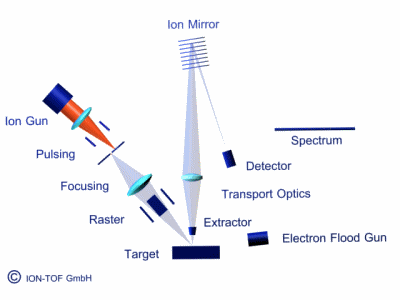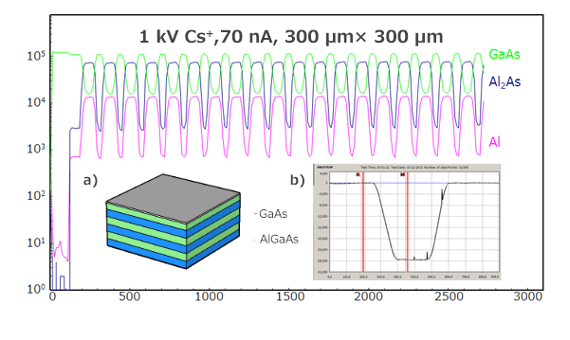Time of Flight Secondary Ion Mass Spectroscopy (TOF-SIMS)

Time-of-flight secondary ion mass spectrometry (TOF-SIMS) is a very sensitive surface analytical technique, well established for many industrial and research applications. It provides detailed elemental and molecular information about surfaces, thin layers, interfaces, and full three-dimensional analysis of the samples. The use is widespread, including semiconductors, polymers, paint, coatings, glass, paper, metals, ceramics, biomaterials, pharmaceuticals.
Strengths
- Highly surface sensitive: analyzes only the top 1-2 nanometers of a surface.
- Exceptional sensitivity to trace elements: Can detect elements and compounds present in extremely small amounts (parts per million or parts per billion).
- Comprehensive elemental and isotopic analysis: Detects all elements, including hydrogen, and their isotopes simultaneously.
- Non-destructive in static mode: Analysis can be performed without damaging the sample when using the static mode.
- High-resolution depth profiling: Provides detailed information about the layers within a material with 1-nanometer resolution.
- 3D Visualization: allows for the creation of informative 3D models that visualize the analyzed material
Limitations
- Quantification Requires Specific Standards
- Matrix Effects: The signal intensity of a particular element is affected by the surrounding material (the matrix). This makes it challenging to directly compare results from different samples.
- Depth Profiling is Destructive: While TOF-SIMS can analyze a surface without damage in static mode, obtaining depth profiles requires sputtering (removing) material, which inherently alters the sample.
- Limited Chemical Information: TOF-SIMS primarily provides information about the elemental and molecular composition of a surface. It offers limited information about the chemical state or bonding environment of the detected species.






